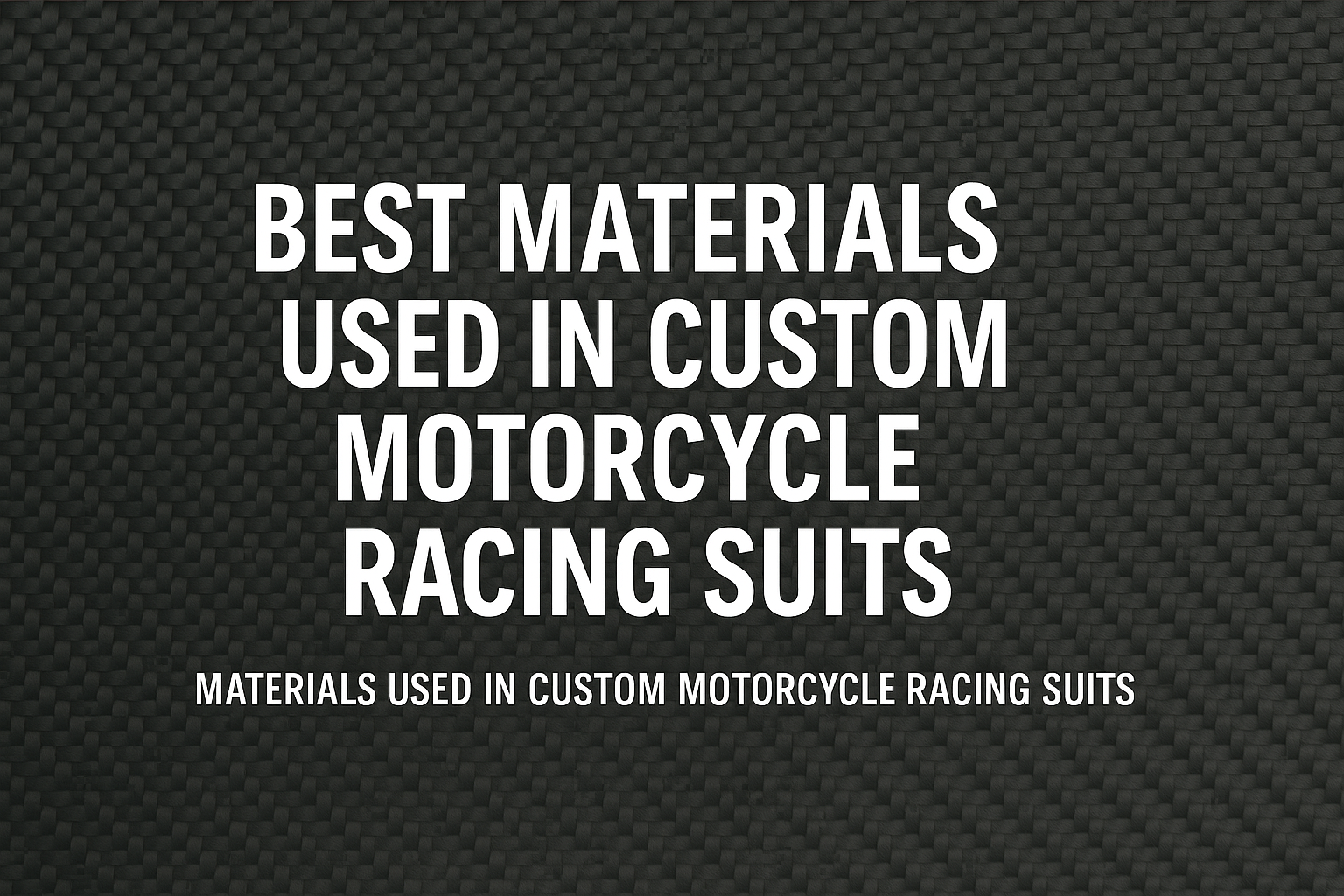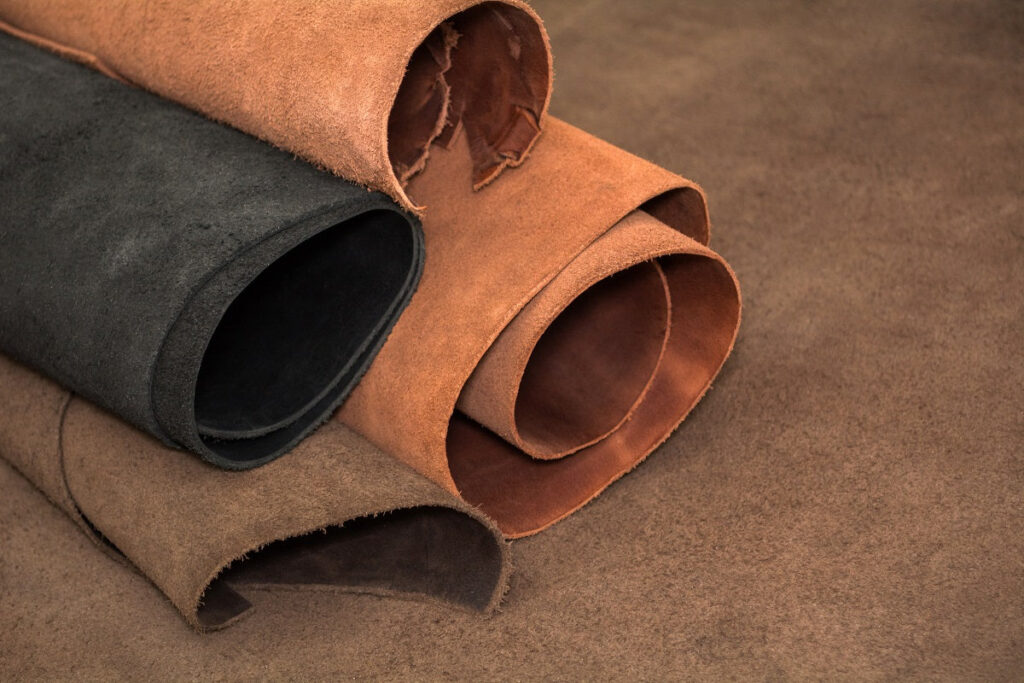Blog
Best Materials Used in Custom Motorcycle Racing Suits

When it comes to custom motorcycle racing suits, performance and protection start with one core element—materials. The right choice of materials can make all the difference in comfort, flexibility, impact protection, and even lap times.
In this guide, we’ll explore the best materials used in custom motorcycle racing suits, their benefits, and how to choose the right one for your riding style.
Table of Contents
Top Materials Used in Custom Motorcycle Racing Suits
1. Kangaroo Leather
Kangaroo leather is widely regarded as the premium choice for racing suits. It’s lightweight, extremely durable, and offers unmatched abrasion resistance.
Benefits:
- 20–30% lighter than cowhide
- High tensile strength
- Soft and flexible for improved mobility
Ideal for: Professional racers who need speed and flexibility
2. Cowhide Leather
The most common leather in motorcycle suits, cowhide provides excellent protection at a lower cost than kangaroo.
Benefits:
- High abrasion resistance
- Affordable
- Long-lasting and weather-resistant
Ideal for: Street riders and amateur racers

3. Kevlar Stretch Panels
Kevlar is a synthetic fiber known for its strength and heat resistance. In racing suits, it’s often used in flex zones—knees, elbows, and groin.
Benefits:
- Enhances flexibility
- Abrasion and tear resistant
- Heat-resistant under extreme conditions
Ideal for: Areas requiring stretch and movement
4. Mesh & Perforated Panels
These are added to improve airflow and rider comfort, especially in hot climates or summer races.
Benefits:
- Promotes ventilation
- Reduces overheating
- Keeps sweat away from the body
Ideal for: Riders in hot or humid environments
5. Moisture-Wicking Liners
Modern custom suits include inner liners made of moisture-wicking fabric to improve comfort and hygiene.
Benefits:
- Keeps skin dry
- Minimizes odor
- Removable and washable
Ideal for: Long races and all-day track events
6. Foam and Armor Inserts
CE-rated armor is housed in foam carriers made of viscoelastic materials that absorb and spread impact.
Benefits:
- CE Level 1 or 2 protection
- Protects high-impact areas (shoulders, back, hips, knees)
- Integrated without compromising flexibility
Ideal for: Every rider, especially track racers
Material Comparison Table
| Material Type | Weight | Protection Level | Flexibility | Best For |
|---|---|---|---|---|
| Kangaroo Leather | Very Light | Excellent | High | Pro Racers |
| Cowhide Leather | Moderate | Very Good | Moderate | Street & Track Riders |
| Kevlar Panels | Light | Moderate | Very High | Flex Zones |
| Mesh/Perforated Panels | Very Light | Low | High | Hot-Weather Racing |
| Moisture-Wicking Liner | Light | – | High | Comfort & Sweat Management |
| Armor Foam | Light | Excellent | Moderate | CE Safety Zones |
Alpha Wing Racing Suits: Built with Premium Materials
At Alpha Wing, every custom racing suit is handcrafted using only race-grade materials tested by professional riders.
Why Riders Choose Alpha Wing:
- ✔️ Kangaroo and cowhide leather options
- ✔️ CE Level 2 armor with viscoelastic padding
- ✔️ Reinforced Kevlar stretch zones
- ✔️ Ventilated mesh and inner liners
- ✔️ Personalized fit and race-day comfort
Whether you’re racing professionally or riding for passion, Alpha Wing delivers unmatched performance, protection, and style.
Conclusion
Choosing the right materials in your custom suit isn’t just about preference—it’s about safety, durability, and ride quality. By understanding the materials used in custom motorcycle racing suits, you can make smarter decisions for your protection and performance.
Ready to build your dream suit with the right materials from top to bottom? Explore Alpha Wing Custom Racing Suits today.
Read More Track-Ready Style: Design Trends in Custom Racing Suits
FAQs
Q1: What is the best leather for motorcycle racing suits?
A: Kangaroo leather is considered the best due to its light weight and high abrasion resistance. However, cowhide is a great alternative for durability and affordability.
Q2: Is Kevlar better than leather for racing suits?
A: Not necessarily. Kevlar is used in stretch panels for flexibility, not as the primary material. Leather, especially kangaroo or cowhide, offers the best abrasion protection overall.
Q3: Can I get a racing suit that’s breathable for hot weather?
A: Yes, look for suits with perforated leather, mesh panels, and moisture-wicking liners. These features allow airflow and reduce sweat during hot-weather riding.
Q4: What material is best for racing suit flexibility?
A: Kevlar stretch panels and accordion leather panels are best for improving flexibility in areas like the elbows, knees, and waist.
Q5: Are CE protectors a material or an add-on?
A: CE protectors are made from viscoelastic foam materials and are built into the suit at critical impact zones. They are not part of the outer shell but are essential for safety.
Q6: Can I combine different materials in a custom suit?
A: Absolutely! Many custom suits combine kangaroo or cowhide leather with Kevlar stretch, mesh, and comfort liners for a perfect balance of protection, style, and mobility.
Q7: Do lighter materials affect safety?
A: Not if they’re high-quality. For example, kangaroo leather is lighter and stronger than cowhide. Always ensure the suit is CE-certified and made by a reputable brand.

